Vertigo (film)
8.4 /10 1 Votes
Country United States | 8.4/10 IMDb Genre Mystery, Romance, Thriller Duration Language English | |||||||||||||||||||||||||||||||||
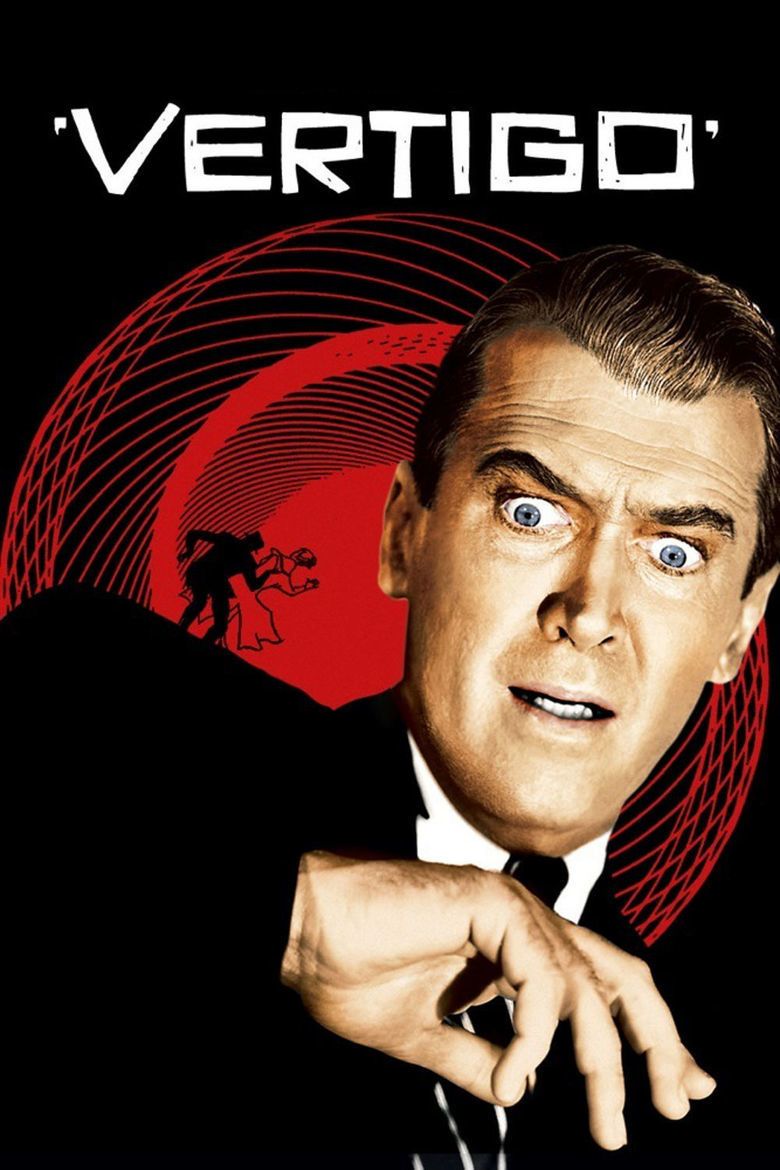 | ||||||||||||||||||||||||||||||||||
Release date May 9, 1958 (1958-05-09) Based on Dentre les morts by Pierre BoileauThomas Narcejac Writer Alec Coppel (screenplay), Samuel A. Taylor (screenplay), Pierre Boileau (novel), Thomas Narcejac (novel) Cast (Det. John 'Scottie' Ferguson), (Madeleine Elster/Judy Barton), (Marjorie 'Midge' Wood), (Gavin Elster), (Coroner), (Scottie's doctor) Similar movies City Lights , 1408 , Blue Is the Warmest Color , Elevator to the Gallows , Bean , All the Boys Love Mandy Lane Tagline Alfred Hitchcock engulfs you in a whirlpool of terror and tension! | ||||||||||||||||||||||||||||||||||
Vertigo official trailer 1 1958 hd
Vertigo is a 1958 American film noir psychological thriller film directed and produced by Alfred Hitchcock. The story was based on the 1954 novel D'entre les morts (From Among the Dead) by Boileau-Narcejac. The screenplay was written by Alec Coppel and Samuel A. Taylor.
Contents
- Vertigo official trailer 1 1958 hd
- Vertigo official trailer 1 james stewart movie 1958 hd
- Plot
- Cast
- Themes
- Development
- Filming
- Alternate ending
- Music and titles
- Filming locations
- Contemporaneous reception
- Re evaluation
- Home media
- Restoration
- Derivative works
- References

The film stars James Stewart as former police detective John "Scottie" Ferguson. Scottie is forced into early retirement because an incident in the line of duty has caused him to develop acrophobia (an extreme fear of heights) and vertigo (a false sense of rotational movement). Scottie is hired by an acquaintance, Gavin Elster, as a private investigator to follow Gavin's wife Madeleine (Kim Novak), who is behaving strangely.

The film was shot on location in San Francisco, California, and at Paramount Studios in Hollywood. It is the first film to use the dolly zoom, an in-camera effect that distorts perspective to create disorientation, to convey Scottie's acrophobia. As a result of its use in this film, the effect is often referred to as "the Vertigo effect".
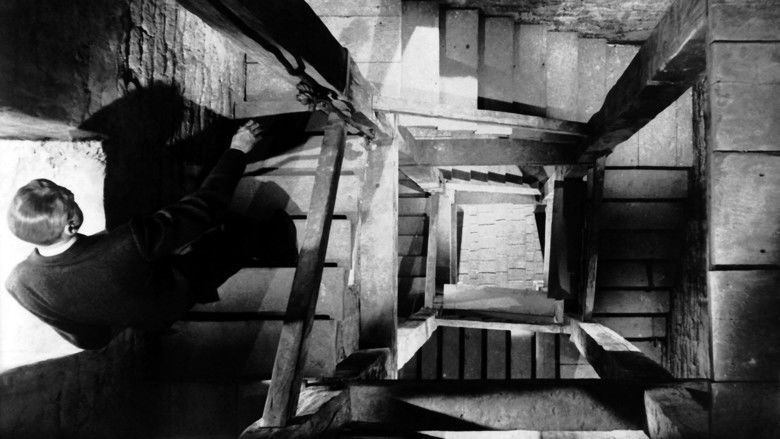
Vertigo received mixed reviews upon initial release, but is now often cited as a classic Hitchcock film and one of the defining works of his career. Attracting significant scholarly criticism, it replaced Citizen Kane (1941) as the best film ever made in the 2012 British Film Institute's Sight & Sound critics' poll. In 1996, the film underwent a major restoration to create a new 70mm print and DTS soundtrack. It has appeared repeatedly in polls of the best films by the American Film Institute, including a 2007 ranking as the ninth-greatest American movie of all time.
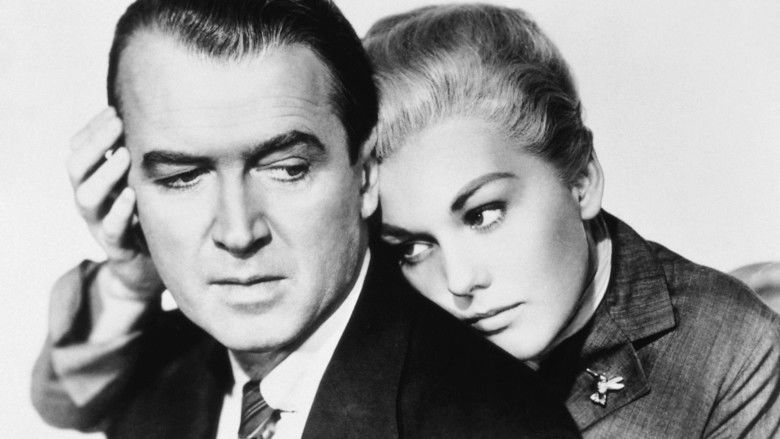
Vertigo official trailer 1 james stewart movie 1958 hd
Plot

After a rooftop chase, where his fear of heights and vertigo result in the death of a policeman, San Francisco detective John "Scottie" Ferguson retires. Scottie tries to conquer his fear, but his friend and ex-fiancée Midge Wood says that another severe emotional shock may be the only cure.
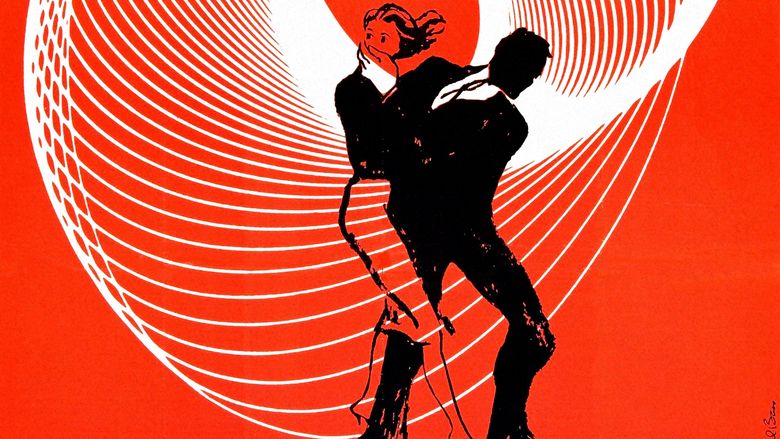
An acquaintance from college, Gavin Elster, asks Scottie to follow his wife, Madeleine, claiming that she is in some sort of danger. Scottie reluctantly agrees, and follows Madeleine to a florist where she buys a bouquet of flowers, to the Mission San Francisco de Asís and the grave of one Carlotta Valdes (1831–1857), and to the Legion of Honor art museum where she gazes at the Portrait of Carlotta. He watches her enter the McKittrick Hotel, but on investigation she does not seem to be there.
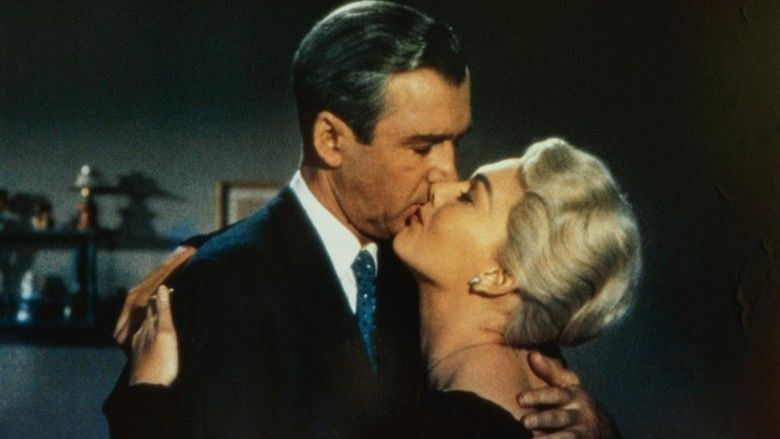
A local historian explains that Carlotta Valdes tragically committed suicide: she had been the mistress of a wealthy married man and bore his child; the otherwise childless man kept the child and cast Carlotta aside. Gavin reveals that Carlotta (who he fears is possessing Madeleine) is Madeleine's great-grandmother, although Madeleine has no knowledge of this, and does not remember the places she has visited. Scottie tails Madeleine to Fort Point and, when she leaps into the bay, he rescues her.
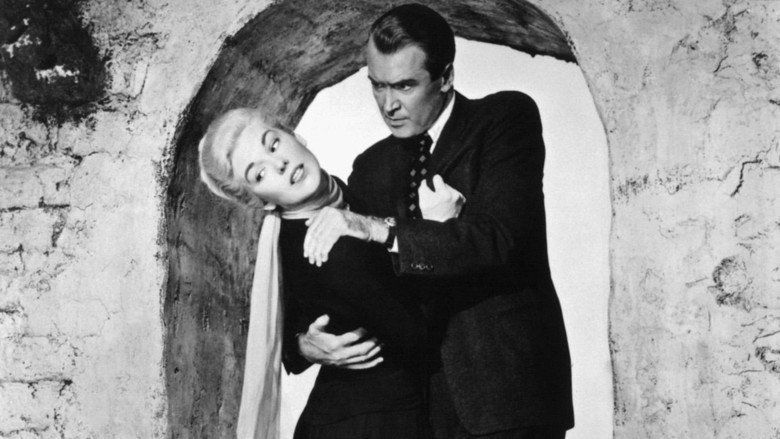
The next day Scottie follows Madeleine; they meet and spend the day together. They travel to Muir Woods and Cypress Point on 17-Mile Drive, where Madeleine runs down towards the ocean. Scottie grabs her and they embrace. Madeleine recounts a nightmare and Scottie identifies its setting as Mission San Juan Bautista, childhood home of Carlotta. He drives her there and they express their love for each other. Madeleine suddenly runs into the church and up the bell tower. Scottie, halted on the steps by his acrophobia, sees Madeleine plunge to her death.
The death is declared a suicide. Gavin does not fault Scottie, but Scottie breaks down, becomes clinically depressed and is in a sanatorium, almost catatonic. After release, Scottie frequents the places that Madeleine visited, often imagining that he sees her. One day, he notices a woman who reminds him of Madeleine, despite her different appearance. Scottie follows her and she identifies herself as Judy Barton, from Salina, Kansas.
A flashback reveals that Judy was the person Scottie knew as "Madeleine Elster"; she was impersonating Gavin's wife as part of a murder plot. Judy drafts a letter to Scottie explaining her involvement: Gavin had deliberately taken advantage of Scottie's acrophobia to substitute his wife's freshly killed body in the apparent "suicide jump". But Judy rips up the letter and continues the charade, because she loves Scottie.
They begin seeing each other, but Scottie remains obsessed with "Madeleine", and asks Judy to change her clothes and hair so that she resembles Madeleine. After Judy complies, hoping that they may finally find happiness together, he notices her wearing the necklace portrayed in the painting of Carlotta, and realizes the truth, and that Judy had been Elster's mistress, before being cast aside just like Carlotta was. Scottie insists on driving Judy to the Mission.
There, he tells her he must re-enact the event that led to his madness, admitting he now understands that "Madeleine" and Judy are the same person. Scottie forces her up the bell tower and makes her admit her deceit. Scottie reaches the top, finally conquering his acrophobia. Judy confesses that Gavin paid her to impersonate a "possessed" Madeleine; Gavin faked the suicide by throwing the body of his wife from the bell tower.
Judy begs Scottie to forgive her, because she loves him. He embraces her, but a shadowed figure rises from the trapdoor of the tower, startling Judy, who steps backward and falls to her death. Scottie, bereft again, stands on the ledge, while the figure, a nun investigating the noise, rings the mission bell.
Cast
Uncredited
Alfred Hitchcock makes his customary cameo appearance walking in the street in a gray suit and carrying a trumpet case.
Themes
Critics have interpreted Vertigo variously as "a tale of male aggression and visual control; as a map of female Oedipal trajectory; as a deconstruction of the male construction of femininity and of masculinity itself; as a stripping bare of the mechanisms of directorial, Hollywood studio and colonial oppression; and as a place where textual meanings play out in an infinite regress of self-reflexivity."
Critic James F. Maxfield suggested that Vertigo can be interpreted as a variant on the Ambrose Bierce short story "An Occurrence at Owl Creek Bridge" (1890), and that the main narrative of the film is actually imagined by Scottie, whom we had seen left dangling from a building at the end of the opening rooftop chase.
Development
The screenplay is an adaptation of the French novel D'entre les morts (From Among the Dead) by Pierre Boileau and Thomas Narcejac. Hitchcock had attempted to buy the rights to the previous novel by the same authors, Celle qui n'était plus, but he failed, and it was made instead by Henri-Georges Clouzot as Les Diaboliques. Although François Truffaut once suggested that D'entre les morts was specifically written for Hitchcock by Boileau and Narcejac, Narcejac subsequently denied that this was their intention. However, Hitchcock's interest in their work meant that Paramount Pictures commissioned a synopsis of D'entre les morts in 1954, before it had even been translated into English.
Hitchcock originally hired playwright Maxwell Anderson to write a screenplay, but rejected his work, which was entitled Darkling, I Listen, a quotation from Keats's Ode to a Nightingale. A second version, written by Alec Coppel, again left the director dissatisfied. The final script was written by Samuel A. Taylor—who was recommended to Hitchcock due to his knowledge of San Francisco— from notes by Hitchcock. Among Taylor's creations was the character of Midge. Taylor attempted to take sole credit for the screenplay, but Coppel protested to the Screen Writers Guild, which determined that both writers were entitled to a credit.
Vera Miles, who was under personal contract to Hitchcock and had appeared on both his television show and in his film The Wrong Man, was originally scheduled to play Madeleine. She modeled for an early version of the painting featured in the film. Following delays, including Hitchcock becoming ill with gallbladder problems, Miles became pregnant and so had to withdraw from the role. The director declined to postpone shooting and cast Kim Novak as the female lead. Ironically, by the time Novak had tied up prior film commitments and a vacation promised by Columbia Pictures, the studio that held her contract, Miles had given birth and was available for the film. Hitchcock proceeded with Novak, nevertheless. Columbia head Harry Cohn agreed to lend Novak to Vertigo if Stewart would agree to co-star with Novak in Bell, Book and Candle, a Columbia production released in December 1958.
In the book, Judy's involvement in Madeleine's death was not revealed until the denouement. At the script stage, Hitchcock suggested revealing the secret two-thirds of the way through the film, so that the audience would understand Judy's mental dilemma. After the first preview, Hitchcock was unsure whether to keep the "letter writing scene" or not. He decided to remove it. Herbert Coleman, Vertigo's associate producer and a frequent collaborator with Hitchcock, felt the removal was a mistake. However, Hitchcock said, "Release it just like that." James Stewart, acting as mediator, said to Coleman, "Herbie, you shouldn't get so upset with Hitch. The picture's not that important." Hitchcock's decision was supported by Joan Harrison, another member of his circle, who felt that the film had been improved. Coleman reluctantly made the necessary edits. When he received news of this, Paramount head Barney Balaban was very vocal about the edits and ordered Hitchcock to "Put the picture back the way it was." As a result, the "letter writing scene" remained in the final film.
Filming
Vertigo was filmed from September to December 1957. Principal photography began on location in San Francisco in September 1957 under the working title From Among the Dead (the literal translation of D'entre les morts).
The scene in which Madeleine falls from the tower was filmed at Mission San Juan Bautista, a Spanish mission in San Juan Bautista, California. Associate producer Herbert Coleman's daughter Judy Lanini suggested the mission to Hitchcock as a filming location. A steeple, added sometime after the mission's original construction and secularization, had been demolished following a fire, so Hitchcock added a bell tower using scale models, matte paintings, and trick photography at the Paramount studio in Los Angeles. The original tower was much smaller and less dramatic than the film's version. The tower's staircase was later assembled inside a studio.
Following 16 days of location shooting, the production moved to Paramount's studios in Hollywood for two months of filming. Hitchcock preferred to film in studios as he was able to control the environment. Once sufficient location footage had been obtained, interior sets were designed and constructed in the studio.
Hitchcock popularized the dolly zoom in this film, leading to the technique's sobriquet, amongst several others, "the Vertigo effect". This "dolly-out/zoom-in" method involves the camera physically moving away from a subject whilst simultaneously zooming in (a similar effect can be achieved in reverse), so that the subject retains its size in the frame, but the background's perspective changes. Hitchcock used the effect to look down the tower shaft to emphasise its height and Scottie's disorientation. Following difficulties filming the shot on a full-sized set, a model of the tower shaft was constructed, and the dolly zoom was filmed horizontally.
The "special sequence" (Scottie's nightmare sequence) was designed by artist John Ferren. The painting of Carlotta was created by Italian artist Manlio Sarra.
The rotating patterns in the title sequence were done by John Whitney, who used a mechanical computer called the M5 gun director, AKA the Kerrison Predictor, which was used during World War II to aim anti-aircraft cannons at moving targets. This made it possible to produce an animated version of shapes (known as Lissajous curves) based on graphs of parametric equations by mathematician Jules Lissajous.
Hitchcock and costume designer Edith Head used color to heighten emotion. Grey was chosen for Madeleine's suit because it is not usually a blonde's colour, so was psychologically jarring. In contrast, Novak's character wore a white coat when she visited Scottie's apartment, which Head and Hitchcock considered more natural for a blonde to wear.
Alternate ending
A coda to the film was shot that showed Midge at her apartment, listening to a radio report (voiced by San Francisco TV reporter Dave McElhatton) describing the pursuit of Gavin Elster across Europe. Midge switches the radio off when Scottie enters the room. They then share a drink and look out of the window in silence. Contrary to reports that this scene was filmed to meet foreign censorship needs, this tag ending had originally been demanded by Geoffrey Shurlock of the U.S. Production Code Administration, who had noted: "It will, of course, be most important that the indication that Elster will be brought back for trial is sufficiently emphasized."
Hitchcock finally succeeded in fending off most of Shurlock's demands (which included toning down erotic allusions) and had the alternative ending dropped. The footage was discovered in Los Angeles in May 1993, and was added as an alternative ending on the laserdisc release, and later on DVD and Blu-ray releases.
Music and titles
The score was written by Bernard Herrmann. It was conducted by Muir Mathieson and recorded in Europe because there was a musicians' strike in the U.S.
In a 2004 special issue of the British Film Institute's (BFI) magazine Sight & Sound, director Martin Scorsese described the qualities of Herrmann's famous score:
Hitchcock's film is about obsession, which means that it's about circling back to the same moment, again and again ... And the music is also built around spirals and circles, fulfilment and despair. Herrmann really understood what Hitchcock was going for — he wanted to penetrate to the heart of obsession.
Graphic designer Saul Bass used spiral motifs in both the title sequence and the movie poster, emphasizing what the documentary Obsessed with Vertigo calls, "Vertigo's psychological vortex".
Filming locations
Filmed from September to December 1957, Vertigo uses location footage of the San Francisco Bay Area, with its steep hills and tall, arching bridges. In the driving scenes shot in the city, the main characters' cars are almost always pictured heading down the city's steeply inclined streets. In October 1996, the restored print of Vertigo debuted at the Castro Theatre in San Francisco with a live on-stage introduction by surviving cast member Kim Novak, providing the city a chance to celebrate itself. Visiting the San Francisco film locations has something of a cult following as well as modest tourist appeal. Such a tour is featured in a subsection of Chris Marker's documentary montage Sans Soleil.
In March 1997, the cultural French magazine Les Inrockuptibles published a special issue titled Vertigo's about the film locations in San Francisco, Dans le décor, which lists and describes all actual locations.
Areas that were shot on location (not recreated in a studio):
Contemporaneous reception
Vertigo premiered in San Francisco on May 9, 1958, at the Stage Door Theater at Mason and Geary (now the Ruby Skye nightclub). While Vertigo did break even upon its original release, earning $2.8 million in gross rental in the United States alone against its $2,479,000 cost, it earned significantly less than other Hitchcock productions. Reviews were mixed. Variety said the film showed Hitchcock's "mastery", but was too long and slow for "what is basically only a psychological murder mystery". Similarly, the Los Angeles Times admired the scenery, but found the plot "too long" and felt it "bogs down" in "a maze of detail"; scholar Dan Auiler says that this review "sounded the tone that most popular critics would take with the film". However, the Los Angeles Examiner loved it, admiring the "excitement, action, romance, glamor and [the] crazy, off-beat love story". New York Times film critic Bosley Crowther also gave Vertigo a positive review by explaining that "[the] secret [of the film] is so clever, even though it is devilishly far-fetched."
Additional reasons for the mixed response initially were that Hitchcock fans were not pleased with his departure from the romantic-thriller territory of earlier films and that the mystery was solved with one-third of the film left to go. Orson Welles disliked the film, telling his friend, director Henry Jaglom, that the movie was "worse" than Rear Window, another film that Welles disliked. In an interview with François Truffaut, Hitchcock stated that Vertigo was one of his favourite films, with some reservations. Hitchcock blamed the film's failure on the 50-year-old Stewart looking too old to play a convincing love interest for the 25-year-old Kim Novak.
Hitchcock and Stewart received awards at the San Sebastián International Film Festival, including a Silver Seashell for Best Director (tied with Mario Monicelli for Big Deal on Madonna Street (aka Persons Unknown) and Best Actor (also tied, with Kirk Douglas in The Vikings). The film was nominated for two Academy Awards, in the technical categories Best Art Direction - Black-and-White or Color (Hal Pereira, Henry Bumstead, Samuel M. Comer, Frank McKelvy) and Best Sound (George Dutton).
Re-evaluation
In the 1960s, the French Cahiers du cinéma critics began re-evaluating Hitchcock as a serious artist rather than just a populist showman. However, even François Truffaut's important 1962 book of interviews with Hitchcock (not published in English until 1967) devotes only a few pages to Vertigo. Dan Auiler has suggested that the real beginning of Vertigo's rise in adulation was the British-Canadian scholar Robin Wood's Hitchcock's Films (1968), which calls the film "Hitchcock's masterpiece to date and one of the four or five most profound and beautiful films the cinema has yet given us".
Adding to its mystique was the fact that Vertigo was one of five Hitchcock-owned films removed from circulation in 1973. When Vertigo was re-released in theaters in October 1983, and then on home video in October 1984, it achieved an impressive commercial success and laudatory reviews. Similarly adulatory reviews were written for the October 1996 showing of a restored print in 70mm and DTS sound at the Castro Theater in San Francisco.
In 1989, Vertigo was recognized as a "culturally, historically and aesthetically significant" film by the United States Library of Congress and selected for preservation in the National Film Registry in the first year of the registry's voting.
Among international film critics, the film has experienced a similar re-evaluation. Every ten years since 1952, the British Film Institute's film magazine Sight & Sound has asked the world's leading film critics to compile a list of the 10 best films of all time. Not until 1982 did Vertigo enter the list, and then in 7th place. By 1992 it had advanced to 4th place, by 2002 to 2nd. Vertigo was voted in first place in Sight & Sound's 2012 poll of the greatest films of all time, both in the crime genre and in general, displacing Orson Welles' Citizen Kane from the position it had occupied since 1962. Commenting upon the 2012 results, the magazine's editor Nick James said that Vertigo was "the ultimate critics' film. It is a dream-like film about people who are not sure who they are but who are busy reconstructing themselves and each other to fit a kind of cinema ideal of the ideal soul-mate." In recent years, critics have noted that the casting of James Stewart as a character who becomes disturbed and obsessive ultimately enhances the film's unconventionality and effectiveness as suspense, since Stewart had previously been known as an actor of warmhearted roles.
A small minority of critics have expressed dissenting opinions. In his 2004 book Blockbuster, British film critic Tom Shone suggested that Vertigo's critical re-evaluation has led to excessive praise, and argued for a more measured response. Faulting Sight & Sound for "perennially" putting the film on the list of best-ever films, he wrote, "Hitchcock is a director who delights in getting his plot mechanisms buffed up to a nice humming shine, and so the Sight and Sound team praise the one film of his in which this is not the case – it's all loose ends and lopsided angles, its plumbing out on display for the critic to pick over at his leisure." In 2007, poet and critic Dan Schneider criticized the ending of Vertigo as melodramatic and argued that a close examination of the film's plot reveals numerous implausibilities, such as Elster allowing someone who knew his murder plot to remain living and thus possibly reveal the plan, or the police officers at the crime scene not inspecting the tower for evidence.
In 2005, Vertigo came in second (to Goodfellas) in British magazine Total Film's book 100 Greatest Movies of All Time. In 2008, an Empire poll of readers, actors, and critics named it the 40th greatest movie ever made.
American Film Institute recognition
The San Francisco locations have become celebrated amongst the film's fans, with organised tours across the area. In March 1997, the cultural French magazine Les Inrockuptibles published a special issue titled Vertigo's about the film locations in San Francisco, Dans le décor, which lists and describes all actual locations. In October 1996, the restored print of Vertigo debuted at the Castro Theatre in San Francisco with a live on-stage introduction by Kim Novak, providing the city a chance to celebrate itself.
Director Martin Scorsese has listed Vertigo as one of his favorite films of all time.
Home media
In 1996, director Harrison Engle produced a documentary about the making of Hitchcock's classic, Obsessed with Vertigo. Narrated by Roddy McDowell, the film played on American Movie Classics, and has since been included with DVD versions of Vertigo. Surviving members of the cast and crew participated, along with noted filmmaker Martin Scorsese and Alfred's daughter, Patricia Hitchcock. Engle first visited the Vertigo shooting locations in the summer of 1958, just months after completion of the film.
Vertigo was first released on DVD in March 1998. It was subsequently released on Blu-ray in October 2012 as part of Alfred Hitchcock: The Masterpiece Collection, in June 2013 as part of Alfred Hitchcock: The Essentials Collection, and finally in May 2014 as a stand-alone Blu-ray edition. Some of the home video releases also carry the original mono audio track.
Restoration
In October 1983, Rear Window and Vertigo were the first two films re-released by Hitchcock's estate after his death. These two films and three others – The Man Who Knew Too Much (1956), The Trouble with Harry (1955), and Rope (1948) – had been kept out of distribution by Hitchcock since 1968. Cleaning and restoration were performed on each film when new 35mm prints were struck.
In 1996, the film was given a lengthy and controversial restoration by Robert A. Harris and James C. Katz and re-released to theaters. The new print featured restored color and newly created audio, using modern sound effects mixed in DTS digital surround sound. In October 1996, the restored Vertigo premiered at the Castro Theatre in San Francisco, with Kim Novak and Patricia Hitchcock in person. At this screening, the film was exhibited for the first time in DTS and 70mm, a format with a similar frame size to the VistaVision system in which it was originally shot. When restoring the sound, Harris and Katz wanted to stay as close as possible to the original, and had access to the original music recordings that had been stored in the vaults at Paramount. However, as the project demanded a new 6-channel DTS stereo soundtrack, it was necessary to re-record some sound effects using the Foley process. The soundtrack was remixed at the Alfred Hitchcock Theatre at Universal Studios. Aware that the film had a considerable following, the restoration team knew that they were under particular pressure to restore the film as accurately as possible. To achieve this, they used Hitchcock's original dubbing notes for guidance of how the director wanted the film to sound in 1958. Harris and Katz sometimes added extra sound effects to camouflage defects in the old soundtrack ("hisses, pops, and bangs"); in particular they added extra seagull cries and a foghorn to the scene at Cypress Point. The new mix has also been accused of putting too much emphasis on the score at the expense of the sound effects. The 2005 Hitchcock Masterpiece Collection DVD contains the original mono track as an option. Significant color correction was necessary because of the fading of original Technicolor negatives. In some cases a new negative was created from the silver separation masters, but in many instances this was impossible because of differential separation shrinkage, and because the 1958 separations were poorly made. Separations used three individual films: one for each of the primary colors. In the case of Vertigo, these had shrunk in different and erratic proportions, making re-alignment impossible. As such, significant amounts of computer assisted coloration were necessary. Although the results are not noticeable on viewing the film, some elements were as many as eight generations away from the original negative, in particular the entire "Judy's Apartment" sequence, which is perhaps the most pivotal sequence in the entire film. When such large portions of re-creation become necessary, then the danger of artistic license by the restorers becomes an issue, and the restorers received some criticism for their re-creation of colors that allegedly did not honor the director's and cinematographer's intentions. The restoration team argued that they did research on the colors used in the original locations, cars, wardrobe, and skin tones. One breakthrough moment came when the Ford Motor Company supplied a well-preserved green paint sample for a car used in the film. As the use of the color green in the film has artistic importance, matching a shade of green was a stroke of luck for restoration and provided a reference shade.
In October 2014, a new 4K restoration was presented at the Castro Theatre in San Francisco. This version gives credit to Harris and Katz at the end of the film, and thanks them for providing some previously unknown stereo soundtracks. This version, however, removes some of the "excessive" Foley sound that was added in the 1996 restoration.
Derivative works
References
Vertigo (film) WikipediaVertigo (film) IMDb Vertigo (film) themoviedb.org
